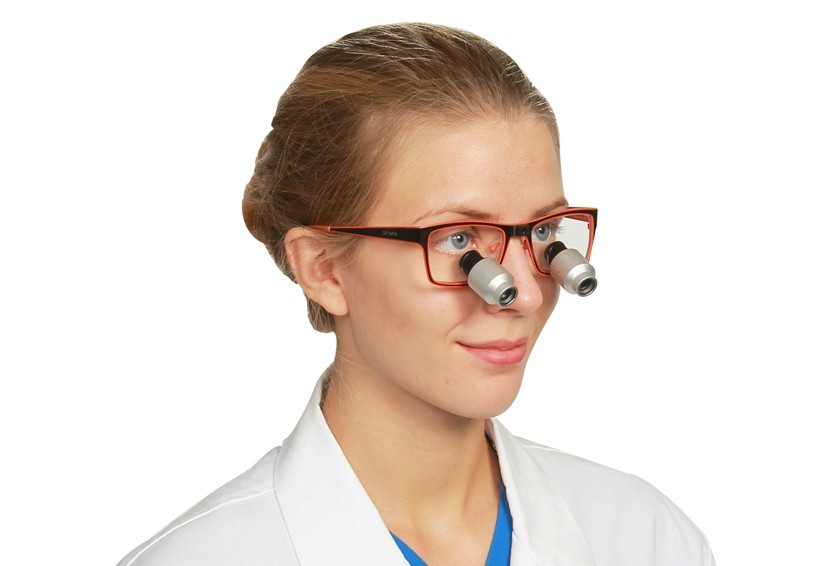Benefits and Uses Of Surgical/Dental Loupes and LED Headlights in the Medical Industry

Simply stating that dental or surgical loupes are utilized for multiple purposes may be an understatement. The reason for using dental/surgical loupes have been classified into three primary categories, first to enhance visualization and examine fine details, second, to compensate for the loss of near vision also known as presbyopia, and 3rd to ensure correct posture and maintain and ergonomic balance while practicing dentistry.
Previously surgical loupes were not accepted in the medical industry, however, of recent use, the wearing of loupes has gained traction and been accepted amongst qualified practitioners.
Event-based recommendations are yet to be published because there is still some research going on about the effectiveness and how a surgical loupe can be further modified to reduce the existing cons. Simply stating there is still a paucity of studies carried on for dental loupes. In dentistry, there are several benefits to accomplish, experience by wearing proper dental loupes and some of them have been stated in this article.
Before diving into the benefits of surgical loupes, it is also important to highlight the features of surgical headlights that are now accompanied by the best surgical loupes.
Headlights have been a turnaround and an important innovation in the field of surgery and dental practice, given that issues of low lighting, improper magnification, and the possibility of accurate outcome have all been negated resulting in accurate examination and precise medical practice. Let us now look at the benefits of dental/surgical loupes and surgical headlights altogether.
Uses Of Surgical Loupes
The employability of dental loupes extends to the varied work profile. Dental practitioners use magnifying loupes for clinical work, students studying dental use them for training. Some of the best features of dental loupes include magnification, depth of field, the field of view – which helps maintain an ergonomic balance, reduces back pain, neck pain, and strain - further leading to saving clinical practice.
Users who have mastered the use of loupes in dental practice have experienced emphasis on both optical and ergonomic benefits of magnification.
In most cases, it has been observed that users of surgical loupes face difficulties, such as visual disadvantage and chronic musculoskeletal problems when not using loupes, as a result of poor posture. The dental literature has a lead emphasis on vision and optics and elaborated the optical principles of using dental loupes as below.
-
The Angle Of Declination
While using the best surgical loupes, the horizontal reference line drawn from the bridge of the nose to the superior oculus crevice at an angle position horizontal to the lens is the angle of declination. The greater the angle of declination, the greater will be the neck tilt to examine the object. To maintain an ergonomic posture, it is important to have the correct angle of declination to minimize strain on the neck, back, and shoulder.
-
The Depth Of Field
The dental loupes can provide visual acuity on both near and far objects. This should ideally happen without any change of position to experience normal vision. The depth of field should be ideally experienced from working distance to infinity. Magnification is a restriction in the depth of field and therefore as magnification increases, the depth of field decreases. High magnification induces light movements of the operator and as such resulting in loss of focus of the area under examination.
-
Field Of View
This feature increases with a decrease in magnification and vice versa. Dental loupes can be magnified up to 6 times however, in practical terms, it is best to use the dental loupe within 2 to 2.5 magnification for a clear view and see multiple quadrant areas. The magnification of 3.5 restricts sight up to a single quadrant and therefore high magnification is considered unsuitable for routine operative dentistry.

Surgical Headlights
Surgical headlights are considered a piece of single operative equipment and also an accessory when accompanied by dental loupes. They are increasingly used during surgeries for utmost precision. Quality surgical headlights can bring tremendous outcomes because of proper lighting and greater visualization. Here are some of the benefits and features of surgical headlights.
-
The Exact Interpretation Of Color
The last clinical advantage of LED lights is their color delivering ability. The Color Rendering Index (CRI) characterizes how well light passes through the eye to make differentiations between unpretentious contrasts in shading. Most incandescent lamps have a high CRI, however lamentably, CRI centers just around how well you can envision color tones.
-
Unadulterated White Tone Of The Light
Quite possibly the most striking highlight of a top-notch LED light in the best surgical loupe is how the white light deflects. Customary halogen bulbs are inalienably yellow, with regular color temperatures around 3200 Kelvin (K). Manufacturers of LED endeavor to address this yellowness by using costly coatings and channels to eliminate a portion of the yellow light, which raises the color temperature to a more attractive, but tolerant level (around 4400K). This method of separation makes the light whiter.
-
Improved Shadow Control
Not exclusively are LED lights more white and more reliable, they give much-preferred shadow command over incandescent lamps. A halogen light, on the contrary, comprises a solitary bulb and a complex reflector.
Tragically, every aspect is an alternate shape and is found an alternate separation from the bulb. These distinctions can make undesirable "hot" and "cold" spots inside the light. In a normal LED, each LED makes the whole spot.
These individual spots are then correctly covered, so regardless of the number of LEDs you block, the spot stays round and reliable. As deterrents move around in the light field, the example doesn't change.
-
Lessens Eye Strain
LEDs attached to surgical loupes emanate the perfect measure of light on a particular region. A lot of glare can help the specialists work for long hours without any problem.
-
Practical And Affordable
Surgical headlights are controlled by batteries. LEDs can keep going for 17 hours. Charging it likewise will not utilize a lot of energy, contrasted with other headlights.
End
The benefits of using the best surgical loupes and surgical headlights are endless in the field of medical practice. In some cases, the utility goes unnoticed, however, with increasing market adaptability, the speculative changes have led to greater use, more so because of the benefits they offer. For the best purchase, visit Loupedirect.com and check out what users have to say. Select from an array of equipment and their accessories to fit your need.

